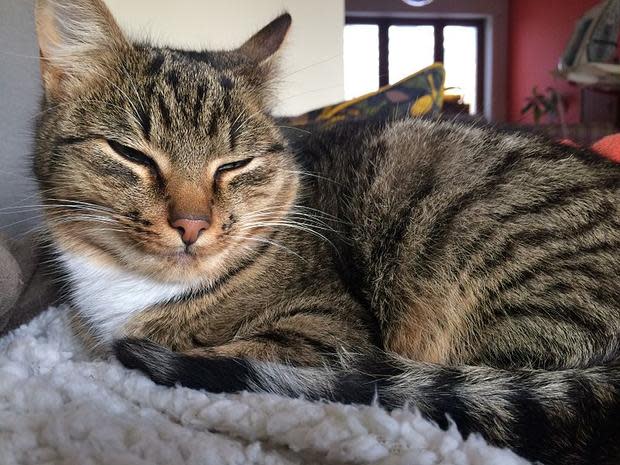Ignore the napping stigma and encourage data scientists to get some shut-eye

Image: Wikimedia Commons/Bluyten
I have such fond memories of being in pre-school. We would play all morning, have lunch and graham crackers, and then my favorite part -- naptime! Forty years later and naptime is still my favorite part of the day.
Data science is a mentally taxing job. And although we should get seven to eight hours of sleep every night, for most of us, our lifestyle doesn't allow it. As a result, it's not unusual for a few members of your data science team to get a little drowsy during the workday, especially after lunch.
Unfortunately, in most workplaces, there's a negative stigma attached to nappers. The social sages would prefer that napping activities be reserved for children and the elderly -- that's a lot of malarkey. There are many famous nappers who were powerful and effective, including John F. Kennedy, Thomas Edison, and Albert Einstein.
To get the most productivity from your data science team members, encourage them to take naps during the day.
The science about naps
Data scientists are in a high-risk category for inadequate sleep. They spend the bulk of their day in intense mental activity; they typically get little to no physical activity; and the demands placed on data scientists often keep them up through the night. So they don't have the motivation, the ability, or the opportunity to get enough sleep -- even if they know better.
Naps serve as a great adaptive control, and the research supports it. A NASA study on pilots and astronauts showed that napping enhanced alertness by 100%, improving performance by 34% and reducing accidents. And, although data science doesn't involve much personal safety risk, bugs are a huge problem in software development, especially if users find them in production code. As odd as it may sound, one of the best ways to prevent bugs is to take a nap.
Naps can also be very beneficial for data scientists who work off hours. A 2006 study by the Sleep Medicine and Research Center showed that naps improve the alertness and performance of shift workers, even if they had a good day's sleep. So, even if you get the recommended amount of sleep, trying to pull this off during the day is in conflict with our natural human nature. It's not unusual to have data scientists working swing or graveyard shifts; in fact, I recommend it as a best practice. However, if you go this route, don't forget to incorporate naptime, or you may end up with drowsy data science syndrome.
Tips for grabbing some z's
Making naptime work is largely cultural; these tactical tips might help.
1: Make sure naptime doesn't turn into extended sleepy time.
The best nap length is between 10 and 30 minutes. If a nap lasts more than 30 minutes, you run the risk of sleep inertia, which is a period of drowsiness after the nap that counteracts its benefits. The best way to prevent this is to utilize the buddy system: have the napper ask a buddy to check in on them after 20 minutes or so. This is inherent if you're practicing pair programming, though it's a simple and effective practice adjustment if you're not.
2: Keep your naptime under control by using a wearable device.
I wear a Jawbone UP24 that helps me track physical activity (i.e., steps taken throughout the day) and sleep activity. It also has an alarm feature that vibrates on my wrist at any specified time. I could certainly use this for a nap, though it has an advanced Power Nap feature that works better. It calculates the optimal nap length based on my sleep patterns. And although it might take me past the 30-minute rule of thumb, I trust the data science embedded in the device to prevent me from sleep inertia.
3: Have a designated area that's suitable for nappers.
The area should be warm, quiet, and dark and furnished with something to lie down on. You don't need a king-size bed, but it should be appropriate and comfortable. It's best if the area has a mirror and some basic facilities for making yourself presentable after the nap.
4: Have a way to signal to other potential nappers that the room is occupied.
Naps shouldn't be scheduled -- they're on an as needed basis. So, don't set up a reservation system for the room, but make accommodations for more than one sleepy scientist (e.g., a backup nap room).
Summary
Encouraging naptime is an effective way to get the most productivity from your data science team. Ignore the popular wisdom and believe the science. Nappers are more alert, productive, and effective.
Talk to your data science team today about the benefits of naptime, and set up a napping area that's quiet, dark, and comfortable so your data scientists can catch 40 winks if they need it. It worked for Einstein, and it can work for you, too.
Also read
Why Hootsuite's CEO Wants Employees To Sleep At Work (Business Insider)

